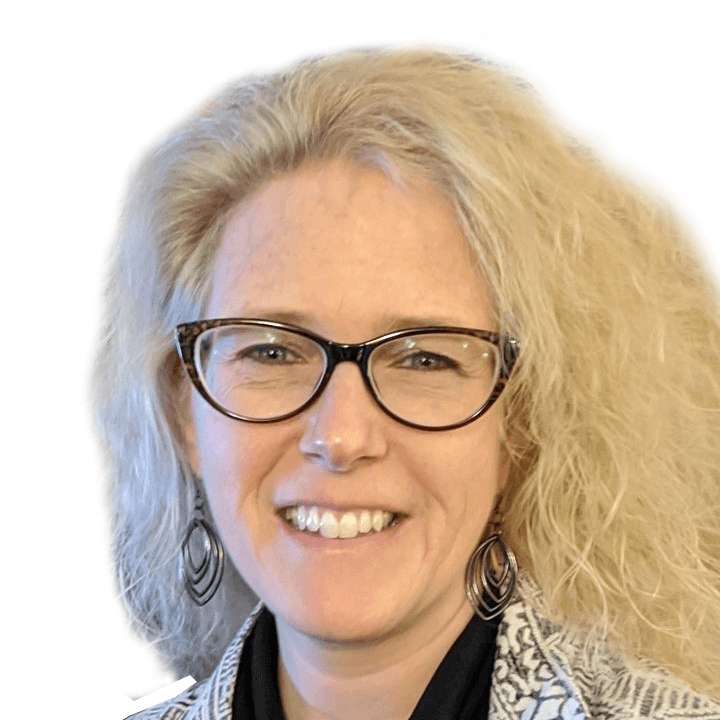If we’ve heard it once, we must have heard it a hundred times. School leaders and administrators are always telling us, “I don’t know how I can add one more thing for my teachers to do right now. They’re already overwhelmed.” As a former teacher who is married to a current teacher, I know well the reality of an educator’s life: there’s no nine-to-five status here. No clocking out at the end of the day. The end of the day may actually be the wee hours of the next morning. The immediacy of access to online grades and assignments, as well as the ever-present demands of the email in-box, present both a blessing and a curse for teachers. Beyond the age-old responsibilities of lesson planning and discipline management and paper grading, they may also be learning to manage a new digital platform (or two…or three). This is the reality in which so many teachers live, and in which so many administrators are cautious about presenting something new, even if it’s a priority.
Enter the project of curriculum mapping. Most schools recognize that having a cohesive, well-developed, school-wide curriculum is necessary, and of course, the teachers’ role in mapping out the curriculum that they teach is essential. But most schools struggle with implementing a plan to make this necessary project feasible for teachers to do. You may be in the beginning stages of considering how to take this project on, or you may be well along in the process and struggling to keep the momentum going. Either way, we want to share a few strategies we have learned from schools who have enjoyed some success in mapping their curriculum.
How to “Make” the Time
As you plan the upcoming school year, look for spaces of time to allocate for curriculum planning and mapping. It’s funny that we use the term “make” when it comes to time, because we all know the calendar fills up quickly with many essential events and activities, and making space in the midst of all that is well nigh impossible. But if this project is a priority for your school, you will have to determine early on (well before everything else fills up the days) that curriculum mapping is one of those essential activities.That looks different for different schools. We’ve seen some schools designate one after-school hour each week for the staff team to work. Some schools have a delayed start or an early release one day each week, and teachers use the extra time with no students for curriculum planning. Many schools plan professional development days in which teachers can focus on the work for a long stretch of time.
How to Give the Time
We’ve already established that teachers are busy people. So when you open up windows of time for them to work, the temptation for them will be to first give their energies to more immediate, urgent needs, and later give some attention to curriculum mapping. The hard truth, then, is that the secondary work (curriculum mapping) will likely not get done. Again, if this is a priority for your school, your teachers need to know that the time you’ve created for them is intended to put curriculum mapping as top priority. Set a reasonable goal for the time you’ve allotted, and then use that goal as an accountability tool to circle back and check on your team’s progress. Remember that curriculum mapping is a process—a long process. That in itself can feel overwhelming to you and your teachers, and it is your role to make the process feel more manageable by assigning it in stages. “Chunk” it, as we’ve heard successful schools tell us recently.
How to Use the Time
Because teachers so often work with a “silo” mindset—my classroom is my domain and my work is my own—it will be important that you establish that curriculum mapping is a team effort. There are some simple strategies you can use to encourage this mindset. If possible, have the staff team all work on curriculum mapping in one room. Everyone brings their curriculum guides, their textbooks, their laptops, and their essential coffee, and the work is done in community. Even if a teacher is working on very different plans from the teacher sitting next to them, think about the great conversations that could still happen as they bounce ideas off each other (How did you come up with those Essential Questions? What kinds of things are you including in your Biblical Integration Concepts?), and the potential discoveries of collaborative options between courses are all the greater for the close proximity.
Maybe it would work better for your staff to team up in departmental groups, whether that’s elementary and secondary groupings, or subject-area groupings. This promotes curricular consistency within each group as teachers work together to communicate their plans in similar ways. In this setting, teachers also more readily see the full extent of the school’s curriculum in each content area. (Where are the gaps in our science curriculum, grades K-12? Where are our math teachers overlapping too much with each other from grade to grade?)
How to Celebrate the Time
In the end, though we might hate to admit it, we’re a lot like our students. We will work harder if the incentive is worthwhile to us. Ultimately, of course, the school’s incentive is to have a clearly defined, well-documented, school-wide curriculum. But as we know, that is a long time coming. So, try using some more immediate incentives to motivate your team in the here and now. We’ve seen some schools celebrate with a weekly prize for teachers who have reached that week’s goal (chocolate never ceases to please, but small gift cards for coffee are easy rewards too). Maybe your goals are bigger and slightly more long-term. In that case, make a bigger celebration of it with a special lunch and certificates given to those who have met the goal.
Another incentive suggestion to try is this: There’s a teacher in-service day coming up in which we will plan to work toward a set goal in our curriculum mapping. If you reach this goal before the in-service day, you don’t have to report to school. (Remember, we’re a lot like our students; teachers might be willing to work a little extra if it means they’ll get a day off!)
There’s no doubt that curriculum is such a major part of who you are as a school, and the work of mapping it out is essential. The time it takes to do this work is a valuable commodity. Our hope for you is that you’ll find ways to make and give and use the time well, and eventually celebrate your accomplishments. If you have developed some time strategies for curriculum mapping, we would love to hear them. Please feel free to share how your school has been successful in making curriculum mapping an essential part of your time.
Photo by Aron Visuals on Unsplash




